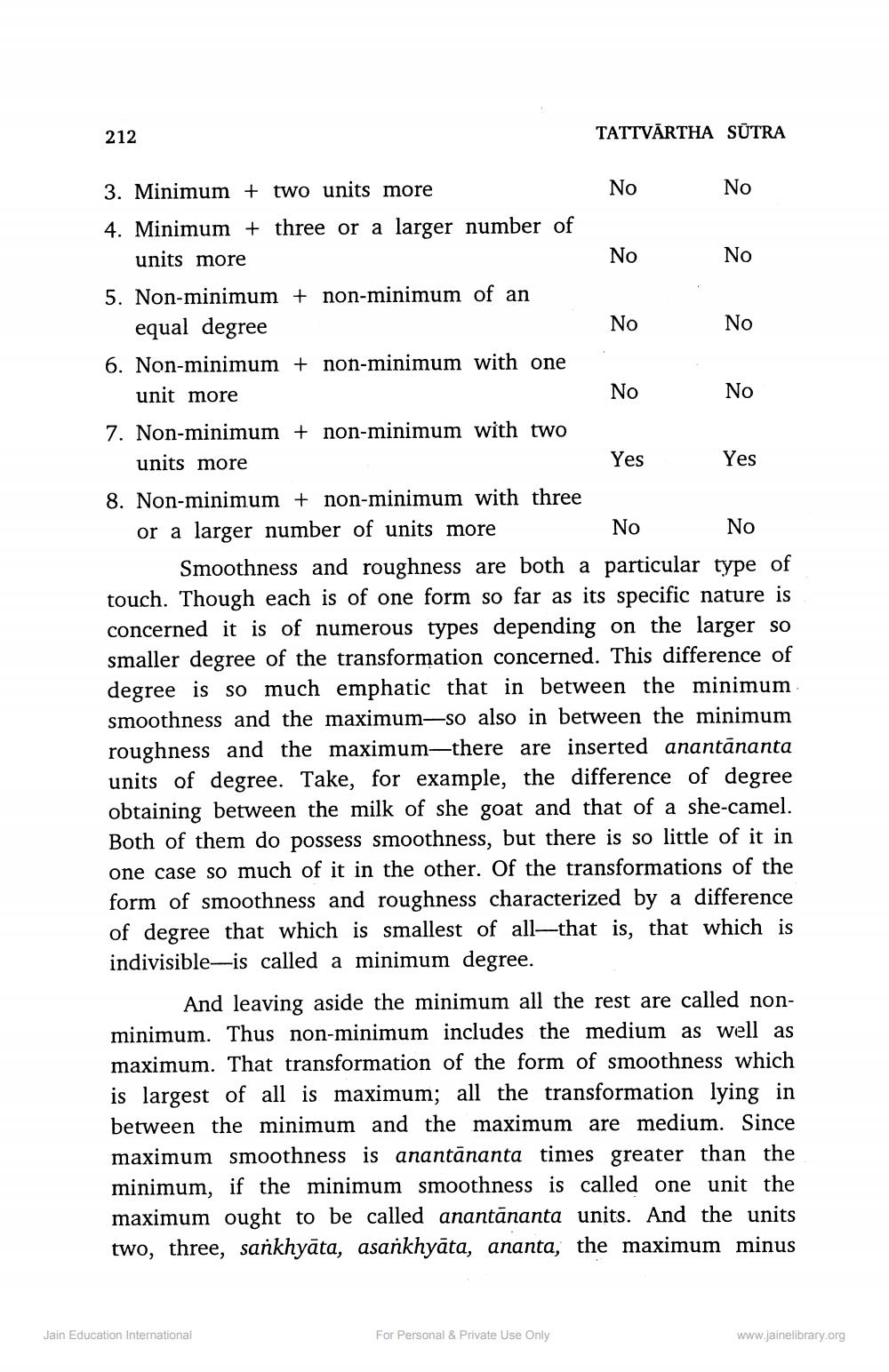________________
212
TATTVĀRTHA SŪTRA
No
3. Minimum + two units more
No 4. Minimum + three or a larger number of units more
No 5. Non-minimum + non-minimum of an equal degree
No 6. Non-minimum + non-minimum with one
unit more 7. Non-minimum + non-minimum with two units more
Yes 8. Non-minimum + non-minimum with three or a larger number of units more
No
No Smoothness and roughness are both a particular type of touch. Though each is of one form so far as its specific nature is concerned it is of numerous types depending on the larger so smaller degree of the transformation concerned. This difference of degree is so much emphatic that in between the minimum smoothness and the maximum—so also in between the minimum roughness and the maximum—there are inserted anantānanta units of degree. Take, for example, the difference of degree obtaining between the milk of she goat and that of a she-camel. Both of them do possess smoothness, but there is so little of it in one case so much of it in the other. Of the transformations of the form of smoothness and roughness characterized by a difference of degree that which is smallest of all—that is, that which is indivisible—is called a minimum degree.
And leaving aside the minimum all the rest are called nonminimum. Thus non-minimum includes the medium as well as maximum. That transformation of the form of smoothness which is largest of all is maximum; all the transformation lying in between the minimum and the maximum are medium. Since maximum smoothness is anantānanta tines greater than the minimum, if the minimum smoothness is called one unit the maximum ought to be called anantānanta units. And the units two, three, sarkhyāta, asankhyāta, ananta, the maximum minus
Jain Education International
For Personal & Private Use Only
www.jainelibrary.org




